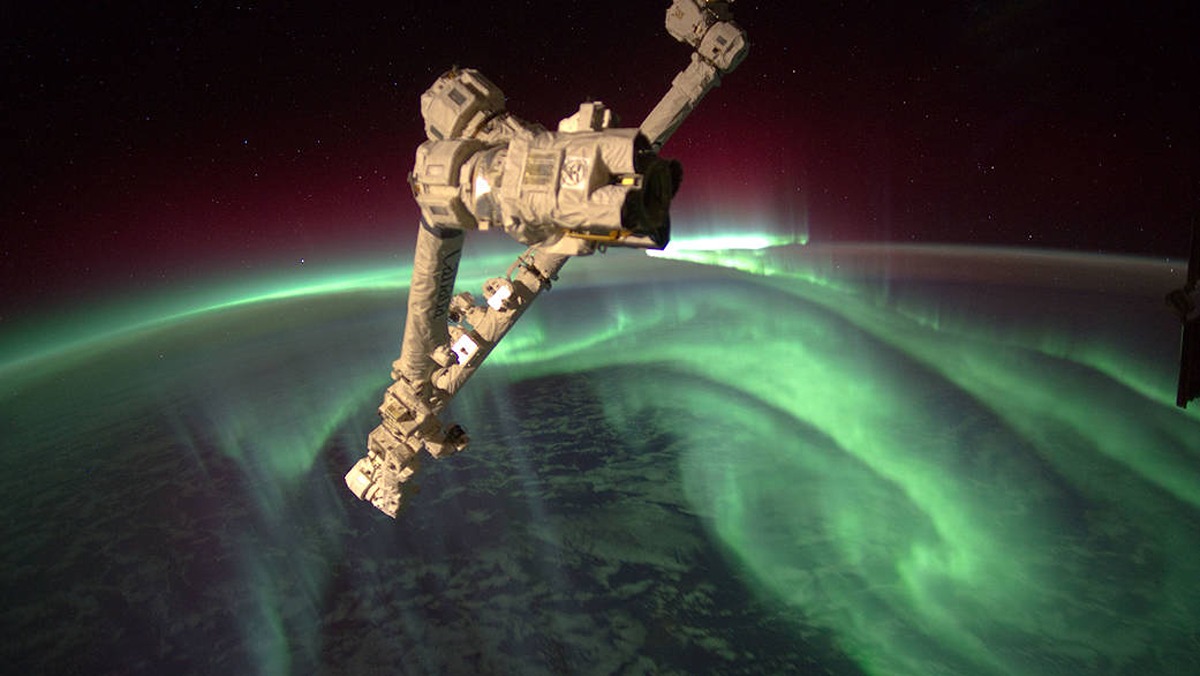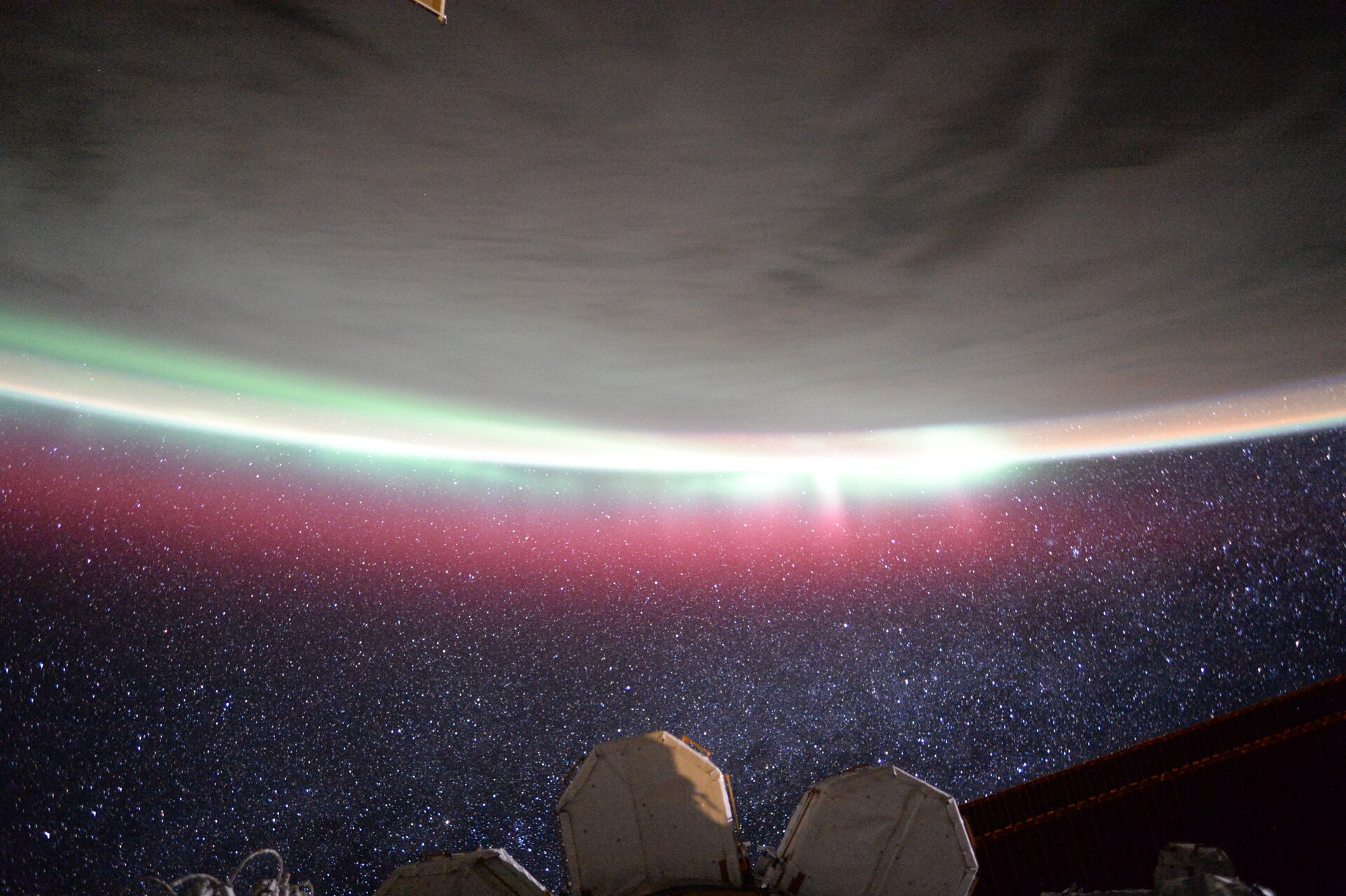
Catching auroras from space takes practice — and a dash of luck.
Danish astronaut Andreas Mogensen captured auroras during his last stay on the International Space Station (ISS) in 2015. Given the sun is nearing its peak of activity right now, he will likely have many more photo opportunities after he flies to the orbiting lab next month on SpaceX's Crew-7 mission.
"Practice, practice, practice, because it is tricky to get good photos," Mogensen, a European Space Agency astronaut who was the first Danish citizen in space, told Space.com. He was speaking during a livestreamed press conference from NASA's Johnson Space Center in Houston.
"But luckily, we have half a year ahead to get good at it," he added. "On my first mission, I had 10 days."
SpaceX's Crew-7 includes Mogensen, NASA astronaut Jasmin Moghbeli, Japan Aerospace Exploration Agency astronaut Satoshi Furukawa, and Konstantin Borisov of Russia's space agency, Roscosmos. The quartet will launch from NASA's Kennedy Space Center at 6:56 a.m. EDT (1056 GMT) no earlier than Aug. 17. You can watch the events live at Space.com, via NASA Television.
Related: SpaceX's Crew-7 astronaut launch delayed to Aug. 17
Astronauts always have a cluster of cameras at the ready in the Cupola, a 360-degree wraparound window in the ISS. While the equipment evolves over time, in 2016 NASA astronaut Jeff Williams recorded a video showing off some of the cameras of that era.
During Williams' mission, there were several units available of the Nikon D4, known for good dynamic range and ISO performance, along with compatible Nikon lenses. (Mogensen used a Nikon D5 during his last excursion, he said in a Zoom interview Tuesday, July 25, with Space.com.)
To make good use of this equipment, the astronauts receive special photography training on Earth to learn how to account for microgravity, the motion of the space station and the extreme light and shadow of space.
The sun is reaching the peak of its 11-year activity cycle, sending more and more charged particles toward Earth. Some of these particles crash into molecules in our atmosphere, generating a glow. That process drives the auroras, also known as the northern or southern lights.
In general, auroras require long exposures, a wide or super-wide angle fast lens, and some way of holding the camera steady. For more detailed advice, check out our guide to the best equipment for aurora photography and where and how to photograph the aurora. Or, if you're just starting, consult our best cameras for astrophotography.

Aside from viewing auroras, Mogensen said he is looking forward to once again looking at lightning strikes known as "blue jets," which he saw during his first mission. "These are a special type of lightning that shoot upwards from the top of thunderclouds," he explained.
He plans to observe the jets from the ISS as part of a research project. Mogensen will use a "neuromorphic camera," which records changes in brightness at the pixel level, allowing for the equivalent of 100,000 pictures a second, he said.
"That gives the scientists a way to study the formation and development of this type of lightning in much more detail," Mogensen added. "There's still a lot to understand exactly how they form, how they develop."
Mogensen praised the jet researchers' hard work, adding the scientists have "one of the more exciting experiments" he will work on and noting they have been featured on the covers of prestigious publications like Science and Nature.
Another photography project will involve pictures of the moon to measure the amount of reflectivity, or albedo, from Earth. "The amount of sunlight that the Earth reflects into space ... is an important parameter when we talk about modeling Earth's climate," he explained.
In other words, how much sunlight the planet can reflect back into space influences the heat building up on our planet. Albedo can change with things such as clouds and terrain, according to this National Center for Atmospheric Research page.
Related: 'Elves' and 'blue jet' lightning in Earth's stratosphere spotted from space
Every astronaut has special places on Earth that they want to view and photograph from space. For example, Crew-7's Borisov said he enjoys freediving in the south Sinai, and hje met his wife there. He plans to take pictures of this area, along with the Red Sea, while he's on the ISS.
"It's like a second home to me, and I want to take photos of those places and see how they look on space," he said on Tuesday.
The astronauts also plan to take photos of special occasions, like mealtimes. Furukawa will bring some food from Japan to share with his crewmates, for example. Food he plans to fly include "steamed rice, Korean raw curry and mochi with the soft balls," he said in a Tuesday Zoom call with Space.com.
Moghbeli is the second Iranian-American in space, after Anousheh Ansari, she told Space.com. Moghbeli's household celebrates both Christmas and Hanukkah, so she will adapt the December events for space living to share with the family.
"My husband and little girls helped make a felt menorah, with lights for each night, that I can pin on to celebrate with them. So I'm excited to do that," she said in the Tuesday press conference.
Later in the day via Zoom, Moghbeli told Space.com she is considering how (if at all) to include latkes, although she does have a dreidel she will bring with her.







